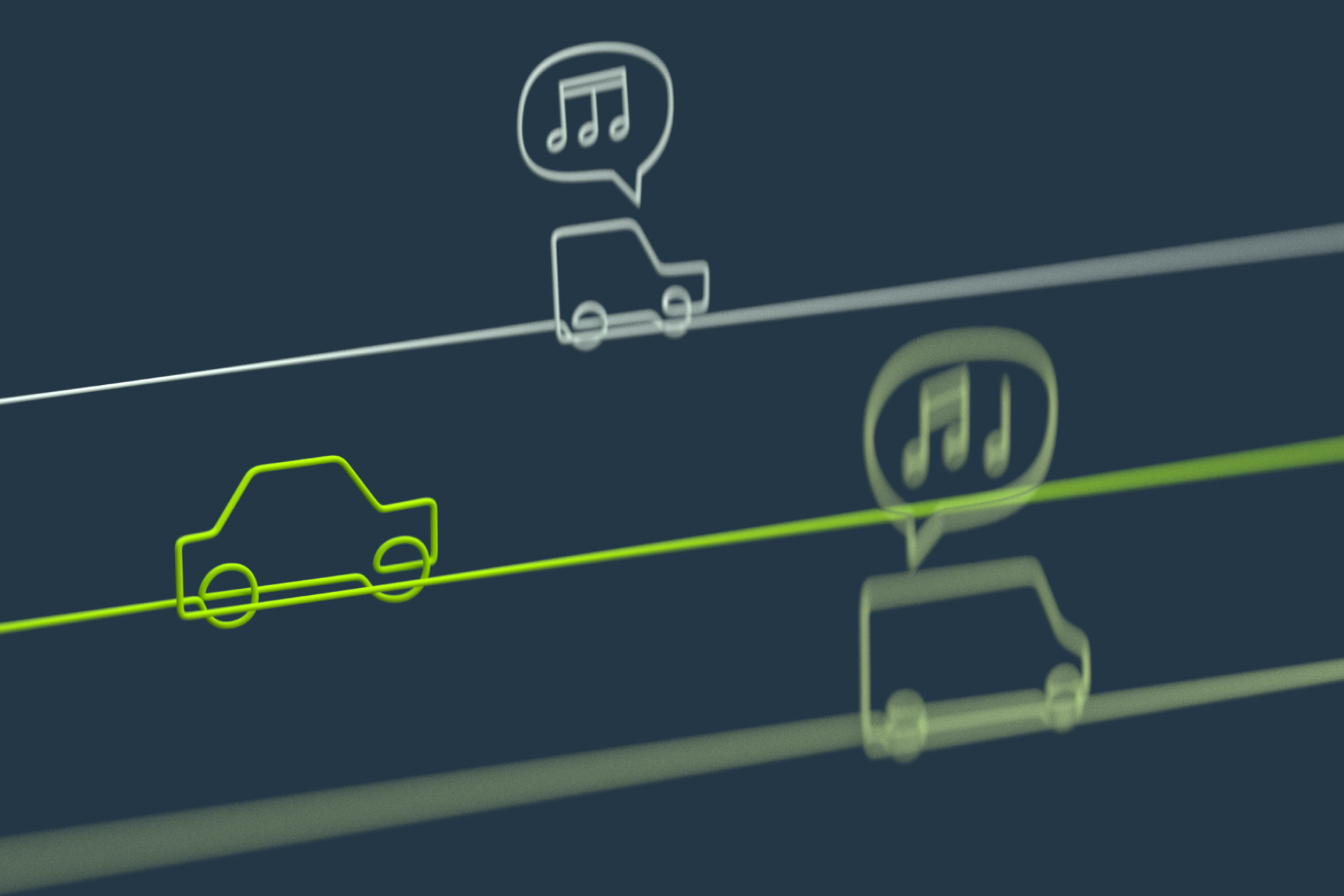Give green a chance: 3 ways to reduce your carbon footprint
September 9, 2021
Since 1970, CO2 emissions have increased by about 90 percent, reports the
United States Environmental Agency.If you drive a car, those emissions may be impacting your carbon footprint. What is a carbon footprint, you may ask? Happy to answer. According to The Nature Conservancy, a carbon footprint is the total amount of greenhouse gases (including carbon dioxide and methane) that are generated by our day-to-day actions.
Those actions—how we live, how we drive, what we eat—all have an effect on our environment. We’re here to show you three ways to reduce your carbon footprint at home and on the road.
Reduce your carbon footprint on the road
Your life involves being on the road (in one way or another) and as such, that driving can affect your surroundings in more ways than one. For example, did you know that burning just one gallon of gasoline driving may result in the production of 20 pounds of greenhouse gases? That’s an estimated six to nine tons of greenhouse gas emissions, each year.
That’s a lot of gas emissions.
Thankfully there are ways you can reduce your carbon footprint on the road. First, consider the set of wheels you’re hitting the pavement with. If you’re in the market for a new ride, try electing for a vehicle that has higher fuel economy (MPG) or is an electric or hybrid model.
Next, consider how you’re driving. Do you live out your drag racing dreams and punch it after a stop light turns green? Are you notorious for hitting the brakes last second? If you answered yes to either of those questions, those actions contribute to your carbon footprint. Driving smoothly can help reduce emissions.
“Drive like you have an egg under your foot.”
Brian West, expert at the Oak Ridge National Laboratory
Be aware of your speed, the distance between you and the vehicle in front of you and be present—enjoy the ride.
As a last set of driving tips, we’ll start with taking care of your car. Regular maintenance or service and checking your tires can be simple ways to reduce emissions and keep your ride in great shape.
You can improve gas mileage up to 3 percent by keeping your tires inflated to the right pressure, reducing emissions and your carbon footprint. HiRoad help: to find your proper tire pressure for your vehicle, locate the sticker on the driver's side door or the glove box and in your owner's manual.
Speaking of simple ways, it goes without saying, but a great way to reduce your carbon footprint on the road? Opting for public transportation, walking or biking and carpooling options.
If you live in an area where it’s safe and accessible, opting for other planet-friendly transportation options can go a long way to reduce your carbon footprint and emissions.
Reduce your carbon footprint at home
When you’re not on the road, you’re at home. And your home—whether you know it or not—can be a source of harmful emissions, increasing your carbon footprint. But not to worry, the help of the Natural Resources Defense Council (NRDC) has some great tips that will reduce your carbon footprint at home:
In the kitchen
Upgrade your fridge to an Energy Star-certified model
Only run your dishwasher when it’s full
Don't set your fridge and freezer temperatures lower than necessary
In the bedroom
Unplug fully-charged devices
Weather strip/seal any windows that have leaks
Switch off lights when you leave the room
In the bathroom
Replace vanity light bulbs with LEDs
Install a low-flow showerhead
Set your water heater temperature to 120 degrees
In the living room
Stream movies directly from your television, not game console
Use a smart power strip
Turn down the heat and use a smart/programmable thermostat
See? No major remodels required. A few tweaks to the rooms of your home and you could dramatically shrink your carbon footprint. To help you understand the energy and emissions coming out of your home, take a look at this helpful energy calculator.
Reduce your carbon footprint on your plate
On a global scale, what we consume daily through our diets has a direct correlation with emissions. The ways to reduce your carbon footprint, believe it or not, go beyond your ride or home—it happens right from your plate.
More research is starting to find a direct link between carbon footprint and food. Mike Berners-Lee, researcher and writer on carbon footprinting, wrote How Bad Are Bananas?
to further emphasize this relationship.“Unlike with money, we are not used to thinking about carbon costs. It’s also much harder to tell how much we are spending because we can’t see it and it’s not written down. Furthermore, unlike what happens when we spend a lot of money, we don’t personally experience the consequences of our carbon impact because it’s spread across nearly seven billion people and many years.”
Mike Berners-Lee, author and researcher
He creates the 10-ton carbon lifestyle, a framework to help any individual budget the impact of individual choices, which includes the carbon footprint of certain foods we consume. So how can we become more mindful of the foods we eat? We’ll show you how to reduce your carbon footprint right from your plate.
Tip #1: Waste less
Food waste is a major contributor to the emission of greenhouse gases, specifically methane. Landfills, aka massive garbage piles, are the third largest source of methane in the United States. Here are some ways to reduce food waste at home:
Take stock of what you already have
Try and avoid bulk, if possible
Plan meals before hitting the grocery store
Use your freezer
Tip #2: Consume less meat
We know how confusing and complex food systems are—but to help uncomplicate some of it, research is showing that eating a diet that doesn’t involve meat (specifically red meat) can be an effective way to reduce your carbon footprint. How?
Because the production of red meat tends to use a lot of feed, water and land. Not to mention that cows themselves give off harmful methane emissions. Eating a vegetarian or pescatarian diet can be better for the environment, and your health! That’s a win-win in our book. Don’t want to cut meat completely? Consider shopping local and organic or swapping carbon-intensive meats like beef and lamb with chicken. Those small choices can make a big difference in the long run.
Start today to reduce your carbon footprint
We’ll be the first to tell you—reducing carbon footprint doesn’t happen overnight. But we all have to take that first step somewhere, right? With these simple steps we’ve provided for you, it won’t take long to start reducing your carbon footprint on the road, at home and on your plate.
It pays to be green and at HiRoad, it pays to be you®.
The information in this article was obtained from various sources not associated with HiRoad®. While we believe it to be reliable and accurate, we do not warrant the accuracy or reliability of the information. HiRoad is not responsible for, and does not endorse or approve, either implicitly or explicitly, the content of any third party sites that might be hyperlinked from this page. The information is not intended to replace manuals, instructions or information provided by a manufacturer or the advice of a qualified professional, or to affect coverage under any applicable insurance policy. These suggestions are not a complete list of every loss control measure. HiRoad makes no guarantees of results from use of this information.
Stay on the path
Get HiRoad in your inbox
Share your email to get the latest about our community of mindful drivers.



